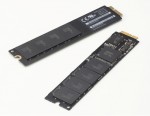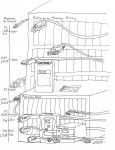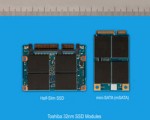More information about the unconventional SSD used in Apple’s new MacBook Air. As I discussed in my previous coverage of this new flash form factor, it resembles a PCI Express Mini Card but is much smaller. Toshiba has now proved my speculation that the device uses SATA signals rather than the PCI Express lane used by the similar AirPort card. We also know that the lauded performance of the device is due to its chips and controller rather than skipping SATA in favor of PCIe as some had speculated.
SATA
How Fast Is It? A Storage Infographic
How fast is a hard disk drive? How about the various flavors of SATA and Fibre Channel? Check out this handy Pack Rat infographic to answer the question, “how fast is it?”
The Four Horsemen of Storage System Performance: I/O As a Chain of Bottlenecks
It is tempting to think of storage as a game of hard disk drives, and consider only The Rule of Spindles. But RAM cache can compensate for the mechanical limitations of hard disk drives, and Moore’s Law continues to allow for ever-greater RAM-based storage, including cache, DRAM, and flash. But storage does not exist in a vacuum. All that data must go somewhere, and this is the job of the I/O channel.
Apple’s Unconventional New MacBook Air SSD
Apple updated the ultra-slim don’t-call-it-a-netbook MacBook Air this week. Along with a wimpy out-of-date CPU, the new Air features all-SSD storage of an entirely new and apparently proprietary type. Let’s take a look and see what we can see.
Unconventional SSDs: PCI Express Mini Card (Mini PCI-E)
With Apple almost certain to introduce a new MacBook Air, questions have turned to the specifics of the hardware to be used. A leaked pre-production photo features an odd memory configuration (not to mention four batteries), a device I immediately recognized as an SSD-on-a-stick. With this high-profile introduction of a new SSD stick form, I thought it was time to cover these unconventional new storage formats.




